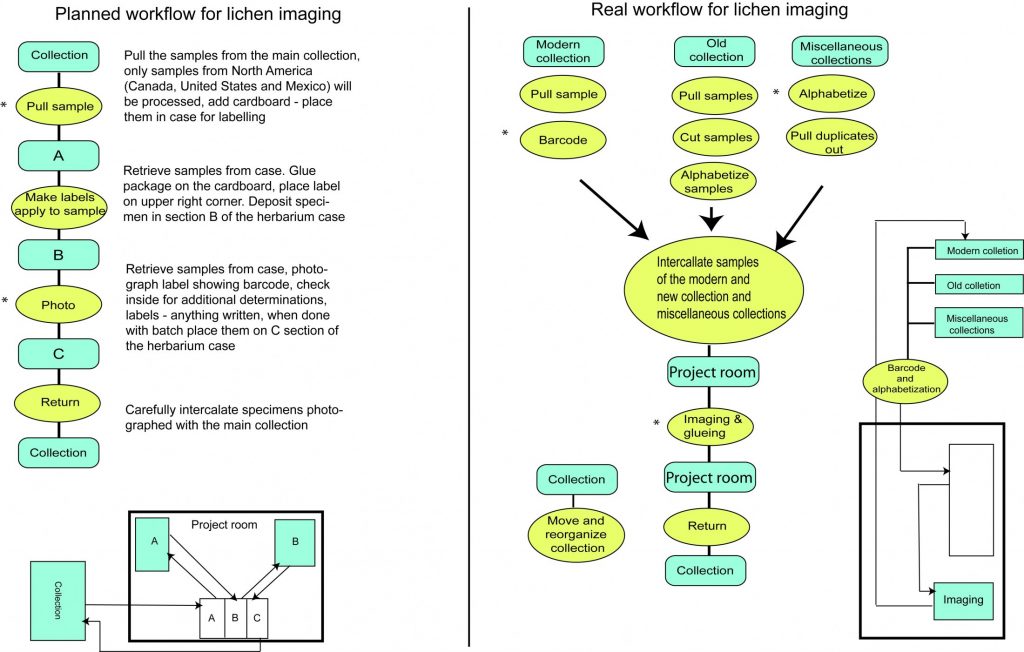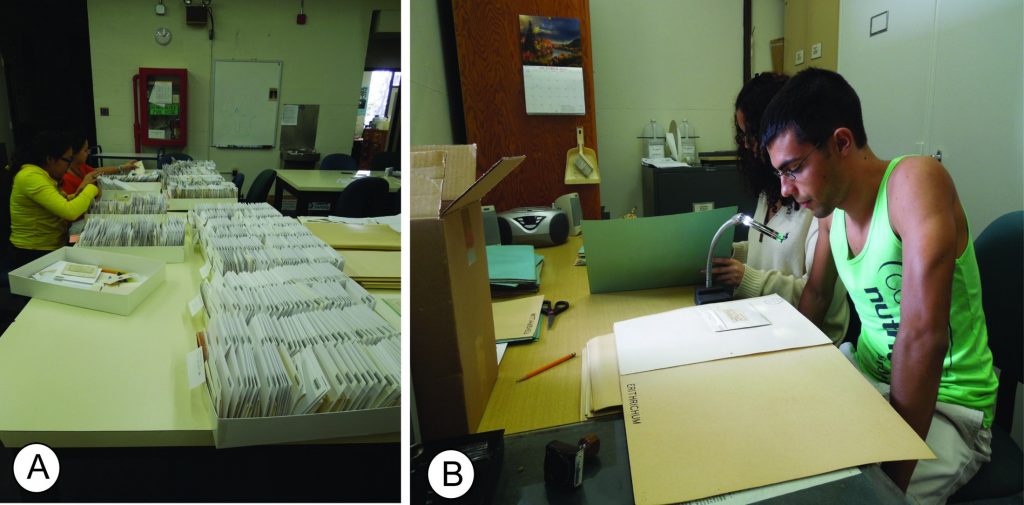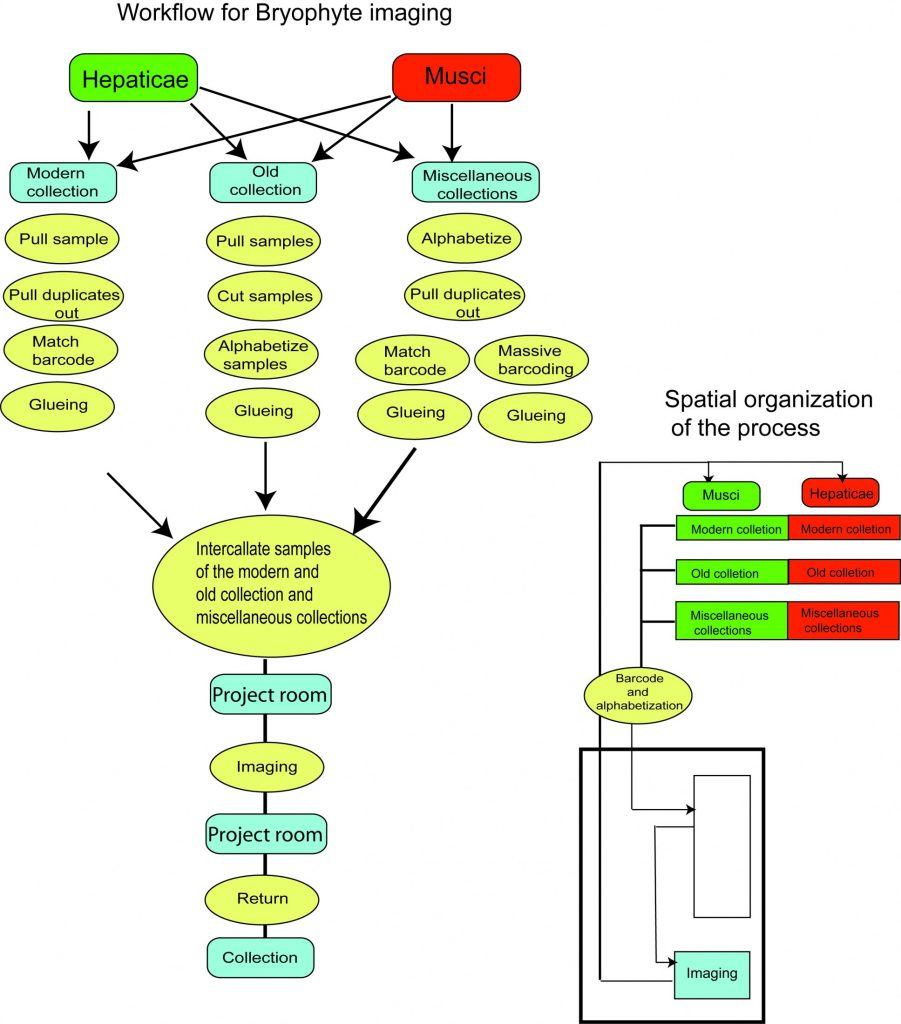The FLAS collection was initially organized under two curatorial styles. The modern collection was kept in envelope-type packets, placed vertically and organized in archival trays. Another part of the collection, encompassing most of the historical collections that date back to the 1800s (Severin Rapp collection), was kept in envelope-type packets mounted on non-archival sheets, organized in folders and stored flat.
Because of the different orientation of the specimens these two collections have been kept spatially separated, making difficult the revision of material to visiting scientists. As for this project, keeping the two collections separated made the workflow for capturing and transferring images time-consuming.
We prepared the collection by cutting these specimens, alphabetizing them, applying the barcode and adding the card, and then intercalating them with the collection.
We started by processing the lichen collection and using it as a pilot collection to identify the work that was needed to conduct the project. Early in this stage we had to revise our workflow, and in the following figure you can see how intricate the process was.
The following figure contrasts the procedure that we (A) initially envisioned, with (B) procedure we used.

After identifying our new challenges, one of our goals was to consolidate our lichen and bryophyte collection and for this purpose we proceed to cut the envelopes mounted on folia of the old collection, and intercalate them with the modern collection . This step was time demanding because in the old collection hand written labels are prevalent and are difficult to read and by consequence, difficult to alphabetize.

Check more of our awesome students here
The Bryophyte collection had yet another challenge. This collection was divided in Anthoceros and mosses and liverworts. Additionally the moss collection was divided into tropical and temperate. In this case, our strategy was slightly different, check the following figure

On 13 May 2013 we completed barcoding, alphabetizing and imaging the FLAS bryophyte and lichen collections from North America. Then we started processing the other herbaria from Florida that are part of this grant.
